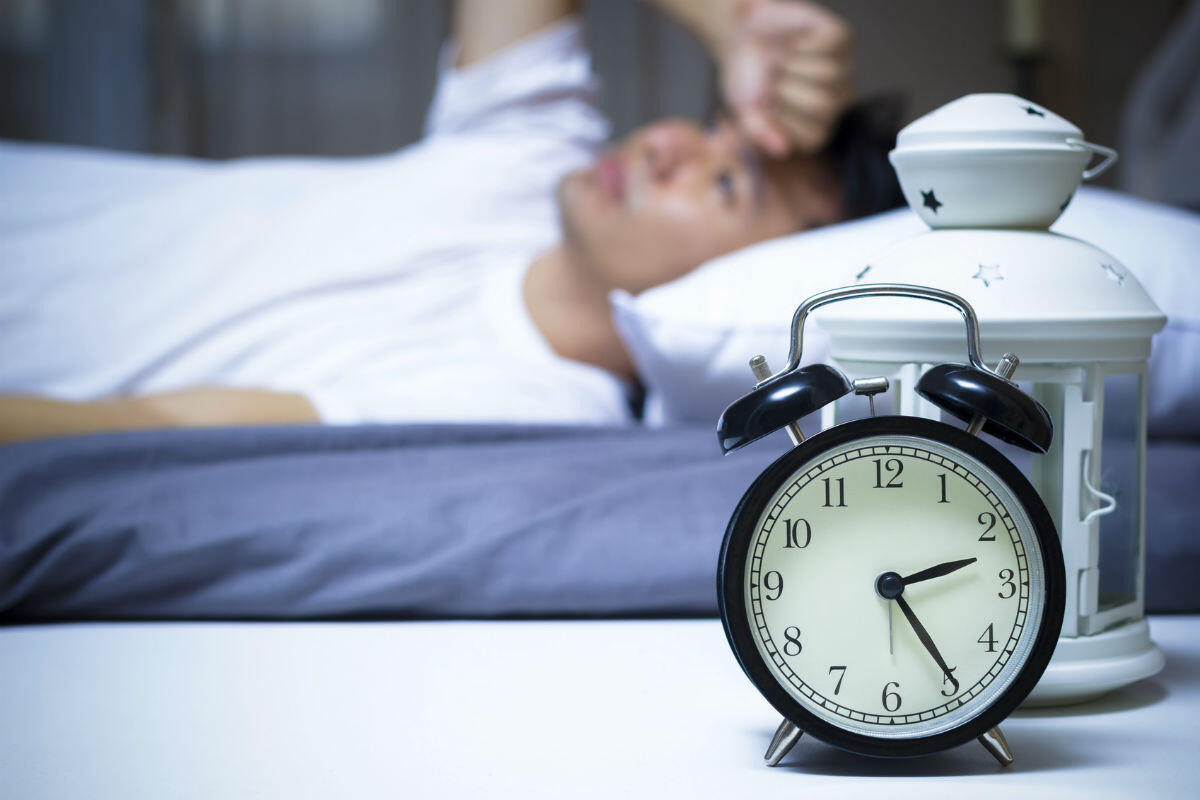Insomnia is associated with a variety of health risks including depression, cancer, and osteoporosis.

Sleep deprivation is also directly linked to an increased risk of accidents that can lead to injuries and even death. For example, insomnia is known to impair driving. According to the American Academy of Sleep Medicine (AASM), nine out of ten officers who pulled over a driver suspected of being drunk found that the driver was actually sleepy. The Academy also estimates that around 20 percent of all serious road injuries are in some way related to sleep deprivation.
Insomnia Increases Risk of Accidents
Insomnia does not simply increase the risk of being in a car accident. It has also been associated with a higher risk of accidents both at home and the workplace. (Read – Sleep Disorders and Workplace Injuries) French researchers conducted a cross-sectional study across 10 countries involving 5,293 individuals with some type of sleep disturbance including:
- difficulty staying asleep
- difficulty falling asleep
- non-restorative sleep
- early morning awakening
Over the previous year, as a result of sleep deprivation:
- 21 percent of respondents reported having had at least one accident at home
- 10 percent of respondents reported having had at least one accident at the workplace
- 7 percent reported having had at least one motor vehicle accident
Among the respondents that reported having had an accident:
- 69 percent had more than one home accident
- 61 percent had more than one car accident
- 57 percent had more than one work accident
Insomnia and Workplace Accidents
A published study from The Archives of General Psychiatry analyzed the link between insomnia and workplace errors and accidents. The study found that the number of errors and accidents attributable to insomnia was 274,000 a year. Surprisingly, the total cost to the U.S. economy, according to the study, is a whopping $31.1 billion. The research involved a survey of around 10,000 individuals. The results revealed that 1 in 5 respondents reported insomnia-related problems that lasted at least a year.
The research found that overall, more than 7 percent of the workplace errors are associated with insomnia. There were some other factors involved as well, but there was a direct link between insomnia and workplace errors. A large number of these errors led to workplace injuries.
Workers’ Compensation for Workplace Injuries
It is important for workers to get adequate sleep in order to avoid getting injured at the workplace. If you are experiencing insomnia that is affecting your ability to work safely, seek medical help. If sleep deprivation has contributed to a workplace injury, you may still be eligible to receive workers’ compensation benefits. Speak to a St. Louis work injury lawyer to learn more. Call The Law Office of James M. Hoffmann at (314) 361-4300 for a free consultation.
Workplace Injury and Accident Causes
Asbestos Exposure
Asbestos Removal
Second Hand Asbestos Exposure
Sexual Assault Workplace
Physical Assault at Workplace
Workplace Injuries Assembly Line
At Fault Accident
Workplace Attack
Benzene Exposure
Injured on Lunch Break
Building Collapse
Workplace Bullying
Chemical Exposure in the Workplace
Chemical Hazards in the Workplace
Cold Stress in the Workplace
Combustible Dust Explosion
Computer Use
Construction Site Accident
Conveyor Belt Accident
On the Job Injury Cause by Coworker
Crane Accident
Injuries from Desk Jobs
Diesel Exhaust Fumes Exposure
Digging Injury
Breaking Company Policy
Drowning at Work
Workplace Drug Use
Electrical Workplace Accidents
Elevator Accident
Equipment Accident
Ergonomics in the Workplace
Excessive Overtime
Workplace Explosion
Extreme Danger
Fall at Work
Fire in the Workplace
Slicer Accident
Forklift Accident
Walk in Freezer
Gas Pipeline Accident
Hard Work
Workplace Hazardous Substances
Hazardous Equipment in the Workplace
Heavy Machinery Accident
Horseplay in the Workplace
Danger at Workplace
Insomnia in the Workplace
Jumping Accident
Ladder Falls at Work
Loading Dock Accident
Machinery Accident Workplace
Equipment Failure Accident
Mining Accident
Mold in the Workplace
Nail Gun Accident
Workplace Noise
Non Collision Accident
Heavy Objects
Workplace Office Equipment
Opioid Use
Injury at Work Due to OSHA Violation
Overexertion Injuries at Work
Use of Pain Killers
Power Tool Injury
Inadequate PPE
Repetitive Motion Injuries in the Workplace
Mansfield Bar
Scaffolding Accident
Secondhand Smoke in the Workplace
Side Effects
Silica Exposure
Sleep Disorder
Slip and Fall Injuries in the Workplace
Stairs at Work
Struck by a Vehicle
Tar Fumes
Toxic Chemical Exposure
Toxic Fumes in the Workplace
Car Accident While Working
Trench Collapse
Trips at Work
Unsafe Working Conditions
Workplace Violence
Welding Injury
Winter Hazards in the Workplace
Working Shifts
